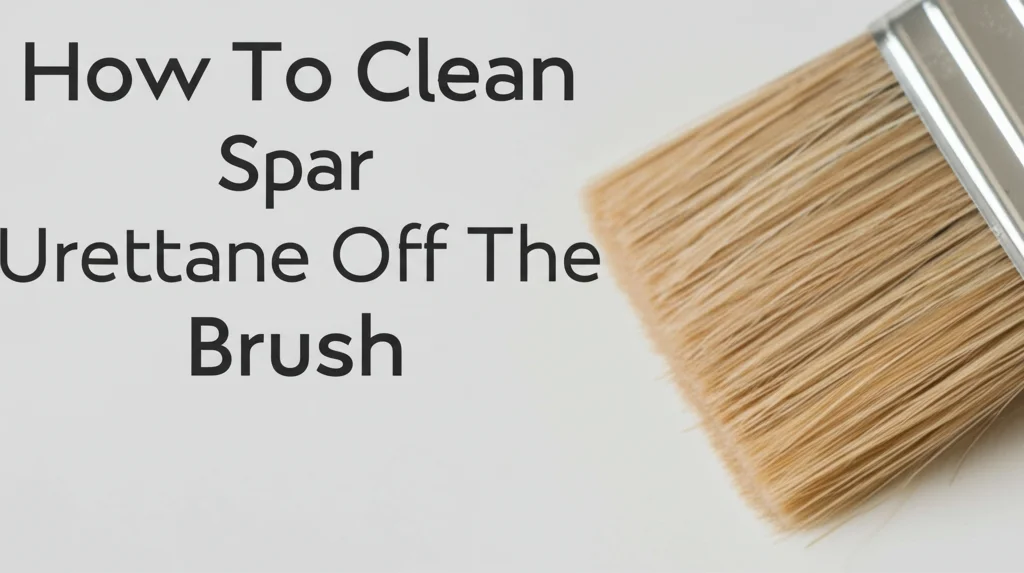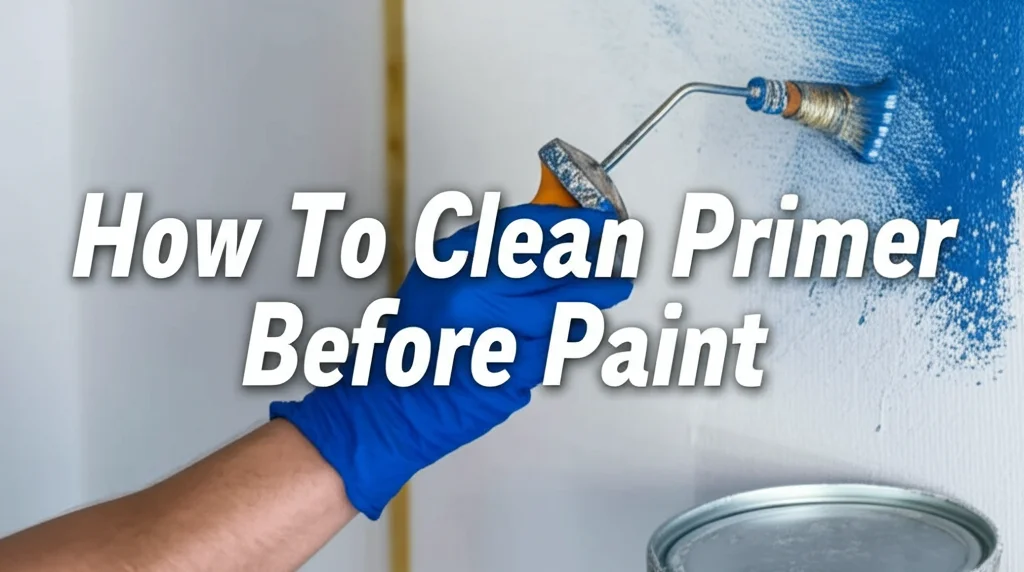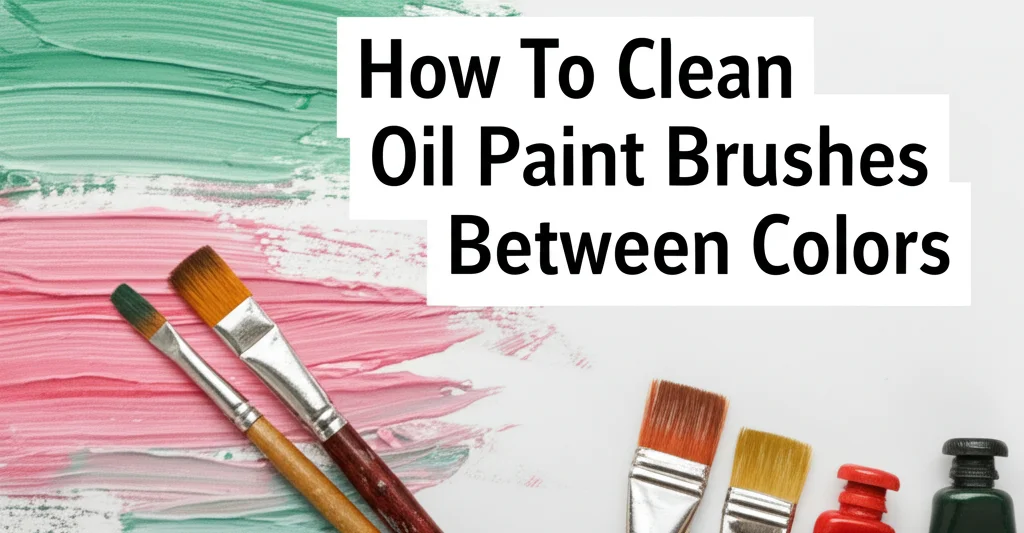· Painting & Home Improvement · 6 min read
How To Clean Zinsser Bin Off Brushes

How to Clean Zinsser BIN Off Brushes: A Complete Guide
Ever used Zinsser BIN shellac primer and wondered how to rescue your brushes afterward? You’re not alone! BIN is fantastic for blocking stains and providing a super-smooth base for painting, but it’s notoriously tricky to clean up. This article will walk you through the best methods for cleaning Zinsser BIN off your brushes, ensuring they’re ready for your next project. We’ll cover everything from the right solvents to use, step-by-step cleaning techniques, and how to properly store your brushes for long-term care.
Takeaway:
- Use denatured alcohol as the primary solvent for cleaning BIN off brushes.
- Avoid water, as it will set the shellac and ruin your brushes.
- Thoroughly rinse and condition your brushes to maintain their shape and flexibility.
- Proper cleaning extends the life of your brushes, saving you money in the long run.
Quick Answer:
To clean Zinsser BIN off brushes, use denatured alcohol. Rinse the brush thoroughly in the alcohol, working it into the bristles until clear. Follow with a second rinse in clean alcohol, then condition with a brush cleaner and reshape before storing.
Why Cleaning Zinsser BIN is Different
Zinsser BIN is a shellac-based primer, and shellac dissolves in alcohol, not water. This is a crucial difference from most latex or oil-based paints. Trying to clean BIN with water will cause the shellac to coagulate and harden within the brush bristles, effectively ruining it. You’ll end up with a stiff, unusable brush. Understanding this fundamental difference is the first step to successful cleaning. It’s why specific cleaning methods are required for this type of primer. Don’t make the mistake of assuming your usual brush cleaning routine will work – BIN demands a different approach.
The Right Solvents for Zinsser BIN Cleanup
Choosing the correct solvent is paramount. While several options exist, some are more effective and safer than others. Here’s a breakdown:
- Denatured Alcohol: This is the gold standard for cleaning BIN. It’s readily available at hardware stores and is highly effective at dissolving shellac. It’s also relatively inexpensive.
- Ethanol (95% or higher): High-proof ethanol can also work, but it’s often more expensive than denatured alcohol.
- Shellac Thinners: These are specifically formulated for shellac and will certainly work, but they can be harsher and have stronger fumes.
- Avoid: Water, mineral spirits, paint thinner, and turpentine. These will all cause the shellac to set and ruin your brush.
Always work in a well-ventilated area when using any of these solvents, and wear appropriate gloves and eye protection. Safety should always be your top priority.
Step-by-Step Guide to Cleaning Your Brushes
Now, let’s get down to the actual cleaning process. Follow these steps for the best results:
- Initial Rinse: Immediately after using the BIN primer, dip the brush into a container of denatured alcohol. Gently swirl the brush around, working the alcohol into the bristles.
- Work the Solvent: Using your fingers (with gloves!), or a brush comb, work the alcohol deep into the bristles, loosening the shellac primer. You’ll see the alcohol start to turn cloudy as it dissolves the BIN.
- Repeat and Replace: Continue rinsing and working the brush in fresh denatured alcohol until the alcohol remains clear. This may require several changes of solvent. Don’t skimp on this step – ensuring the alcohol stays clean is vital.
- Second Rinse: Once the alcohol runs clear, give the brush a final rinse in clean denatured alcohol. This ensures all traces of the primer are removed.
- Brush Cleaner & Conditioner: After the alcohol rinse, use a dedicated brush cleaner and conditioner. This helps restore the bristles’ flexibility and prevents them from drying out. Follow the instructions on the brush cleaner product.
- Reshape and Dry: Gently reshape the brush bristles with your fingers, restoring their original form. Hang the brush upside down to dry, or lay it flat on a clean surface. Avoid letting the bristles rest on the bottom, as this can cause them to splay.
Dealing with Stubborn, Dried BIN
What if you didn’t get around to cleaning your brush immediately, and the BIN has dried? Don’t despair – it’s still possible to salvage it, but it will require more effort.
- Soaking: Submerge the brush in denatured alcohol for several hours, or even overnight. This will help soften the dried shellac.
- Brush Comb: Use a brush comb to gently remove the softened shellac. Work from the base of the bristles towards the tips.
- Repeat: Repeat the soaking and combing process until all traces of the BIN are removed.
- Conditioning: After cleaning, thoroughly condition the brush with a brush cleaner to restore its flexibility.
Remember, the longer the BIN sits, the harder it will be to remove. Prevention is always the best approach – clean your brushes immediately after use.
Brush Storage for Longevity
Proper storage is crucial for maintaining the life of your cleaned brushes. Here’s how to do it right:
- Hang or Lay Flat: Store brushes either hanging upside down or laying flat. This prevents the bristles from bending or becoming misshapen.
- Brush Keeper: Consider using a brush keeper, a plastic cover designed to protect the bristles.
- Avoid Contact: Ensure the bristles don’t come into contact with anything that could damage them.
- Cool, Dry Place: Store brushes in a cool, dry place away from direct sunlight and extreme temperatures.
Frequently Asked Questions (FAQs)
- Can I use mineral spirits to clean Zinsser BIN? No, mineral spirits will cause the shellac to harden and ruin your brush. Always use denatured alcohol.
- How often should I replace my brushes? With proper cleaning and storage, a good quality brush can last for years. However, if the bristles become frayed or damaged, it’s time to replace it.
- Is BIN primer flammable? Yes, BIN primer and denatured alcohol are both flammable. Work in a well-ventilated area and keep away from open flames.
- What if I get BIN on my skin? Wash the affected area immediately with soap and water. If irritation persists, consult a doctor.
- Can I clean Zinsser BIN brushes in a paint shaker? While tempting, it’s not recommended. The agitation can damage the bristles. Hand cleaning is gentler and more effective.
Conclusion
Cleaning Zinsser BIN off brushes requires a specific approach, but it’s entirely achievable with the right knowledge and tools. Remember to use denatured alcohol as your primary solvent, thoroughly rinse and condition your brushes, and store them properly. By following these steps, you can extend the life of your brushes, save money, and ensure they’re always ready for your next painting project. Don’t let the fear of cleanup deter you from using this excellent primer – a little extra effort will keep your brushes in top condition.




